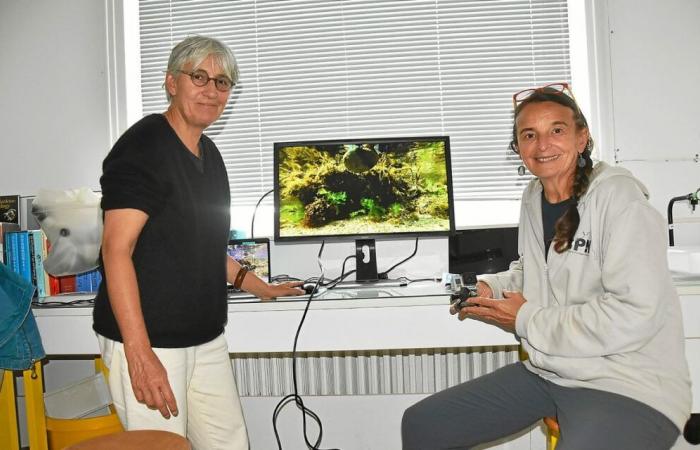From the “Living Beaches” program to the “Objectif Plancton” program, collaborations between residents and researchers are multiplying with a view to advancing research. Since 2022, the Moorev participatory science project has been added to this, for “Microclimates and tools for observing the responses of living things on the seabed”, initiated at the Concarneau Marine Station. The idea? Acquire and analyze data in coastal habitats, in order to better understand the adaptations and responses of marine species to climate change.
When students become scientists
To do this, the initiators of the program regularly organize outings on the foreshore with different schools in the Concarneau region. During the 2023-2024 school year, seven schools, ranging from kindergarten to high school, took part in the project, as part of the Marine Educational Areas set up in the region. “The students then become scientists to acquire data,” says Nadine Le Bris, professor at the Sorbonne-Université at the Institute of Systematics, Evolution, Biodiversity (ISYEB) of the National Museum of Natural History (MNHN). On site, the youngest will apply a very specific protocol by placing small cameras in the puddles of water that remain between two tides. “This allows us not to disturb the species and to be able to observe them thanks to the images that will then be extracted and analyzed in class by the students,” explains Nathalie Delliou, from Esprit Nat’ure, involved in the Moorev project.
Once the sequences are set up, the students are tasked with counting the species present but also examining the different interactions between them. Educational workshops that are inspired by “research methods already developed to study deep-sea species,” emphasizes Nadine Le Bris, a specialist in benthic marine ecology.
Better understanding the adaptability of species
Beyond the undeniable educational interest of such a project, the objective remains above all scientific. In addition to observing the biodiversity present in these puddles, the cameras are used to measure water temperatures throughout the seasons. This allows us to describe, precisely, the microclimatic conditions to which the organisms located in these basins are exposed, in a context of global warming of the waters. “When the temperature rises, we see that the algae offer refuge to the species thanks to the oxygen and shade they produce”, reports Nadine Le Bris, who thus highlights the need to protect underwater flora.
Through this development of knowledge, the Moorev project has received support from the CNRS and the Fondation de France. In the future, the project leaders would like to increase the number of observation measurement points, in particular by entrusting “cameras to fishermen”, informs Nathalie Delliou.
A workshop open to the public
For the general public, it will be possible to learn more about the program during the Science Festival which will take place on October 5 and 6, 2024, at the Concarneau Marine Station. On Saturday, participants, equipped with cameras, will go to discover the species present on the foreshore. At the end of the outing, the videos will be analyzed during a dedicated workshop.
Practical
Outing limited to 20 people. Registration by email [email protected] or tel. 02 98 50 42 81.






